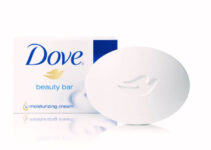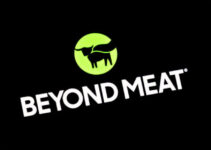The Lego Group is a toying manufacturing Danish multinational company. Ole Kirk Christiansen founded the toy manufacturing company in 1932. The toy brand has established a network of approximately 42 regional offices in various countries across the globe. Today, we’ll discuss the brand analysis of Lego; it focuses on its mission, vision, values; customer reviews, social media presence, marketing campaign analysis, web and social media traffic, customer journey, and target audience demographic.
Brand Analysis of Lego
Let’s discuss the brand analysis of Lego; some of the main elements involved in the Lego brand analysis are as follows;
Mission, Vision, and Value of Lego
The mission statement of Lego is to develop and inspire the builders of the future. The toy brand focuses on developing, assisting, and guiding children to reach their full creative and innovative potential by playing with toys. Lego has made a strong commitment to the construction of building toys, and it focuses on building a sustainable future.
Environmental responsibility is among the company’s values. In fact, Lego has a commitment to the planet, people, partners, and the play of toys. Lego is a family business and the company strongly believes in the fact that children are our future and role models. The toy brand has a specific role, purpose, and objective to play and set its direction.
Some of the main core values of Lego are as follows;
- Quality
- Caring
- Learning
- Fun
- Creativity
- Imagination
Customer Reviews and Feedback about Lego
The online customer reviews, star ratings, and feedback analysis of Lego are as follows;
- Yelp: 4.3stars rating out of 2382 reviews
- Reviews.io: 3.8stars rating out of 35 reviews
- Trust Pilot: 2.2 stars rating out of 1235reviews
- Comparably: a 4.2stars rating out of 1673 reviews
- Amazon: 4.8stars rating out of 5244 reviews
- Product Reviews: 2.2 stars rating out of 55reviews
The online customer reviews, star ratings, and feedback analysis of Lego show that there is a mixture of both good and bad reviews. Happy and satisfied customers of the toy brand are sharing positive reviews and high star ratings. On the other hand, dissatisfied customers are posting their negative experiences with the toy manufacturing brand.
Social Media Presence of Lego
The social media network and following of Lego on various social media platforms is as follows;
- Instagram: 10.9Million followers
- X: 1.1Million followers
- Facebook: 15.2Million followers
Lego has established a very large network and a strong presence on various social media platforms. The toy regularly posts pictures and videos of unique ideas for building new types of construction with the Lego building blocks. In fact, the toy brand organizes content among the loyal Lego users and they share their unique ideas of contraction with blocks; the winner receives the grand prize. It is a healthy activity and it helps the company to connect and engage with targeted customers.
Marketing Campaign Analysis of Lego
Lego runs various types of marketing and advertisement campaigns for the promotion of its toys, products, and bands. The toy brand employs various media channels; social and digital media platforms, email marketing, contests about the toy block contraction ideas, philanthropic activities, and sponsorship of events. Multiple marketing campaigns and various media channels would help the company amplify its customer market reach, network, and sales.
Web and Social Media Traffic of Lego
The web and social media traffic of Lego on various media platforms is as follows;
- Traffic: 30.4Million monthly average visitors
- Average Duration: 3.31 minutes
The source of web and social media traffic comes from the following countries:
- USA: 37.78%
- UK: 8.27%
- Canada: 5.3%
- Poland: 4.81%
- Germany: 4.28%
- Others: 39.56%
The proportion of web traffic comes from the following media channels:
- Direct: 53.91%
- Referrals: 3.67%
- Organic Search: 31.51%
- Paid Search: 7.72%
- Social: 1.95%
- Email: 0.12%
- Display: 1.13%
Percentage of traffic comes from following social media platforms;
- YouTube: 30.89%
- Facebook: 23.35%
- LinkedIn: 19.67%
- Reddit: 14.03%
- X: 4.58%
- Others: 7.47%
Lego Customer’s Journey
The customer’s journey of Lego starts with running various types of marketing and advertisement campaigns to spread brand awareness. The targeted customers become aware of the company’s toys and building blocks. However, it makes them visit the nearest toy store and check out the online store to find building blocks. If they like playing with the building blocks toys, they would keep ordering the building blocks; otherwise, they won’t.
Target Audience Demographic of Lego
The demographic segment of the target audience of Lego is as follows;
- Age: 18 to 64 years old
- Gender: 59% men and 41% women
- Education: gaming aware
- Income: medium to high
- Interest: gaming, toys, consoles, and accessories
- Social Status: low
The demographic segmentation of the target audience of Lego allows you to create a buyer person and customer avatar of the targeted ideal customers. They are both men and women from various age groups; they have a great interest in gaming and accessories, and they want to play games with unique and innovative ideas.
Conclusion: Brand Analysis of Lego | Lego Brand Analysis | Strategic Analysis of Lego
After an in-depth study of the brand analysis of Lego; we have realized that Lego is the world’s leading toy manufacturing brand. If you are learning about the Lego brand analysis; then you should keep in mind the abovementioned mission, vision, values; customer reviews, social media presence, marketing campaign analysis, web and social media traffic, customer journey, and target audience demographic.

Ahsan is an accomplished researcher and has a deep insight in worldly life affairs. He goes Live 3 days a week on various social media platforms. Other than research writing, he’s a very interesting person.


